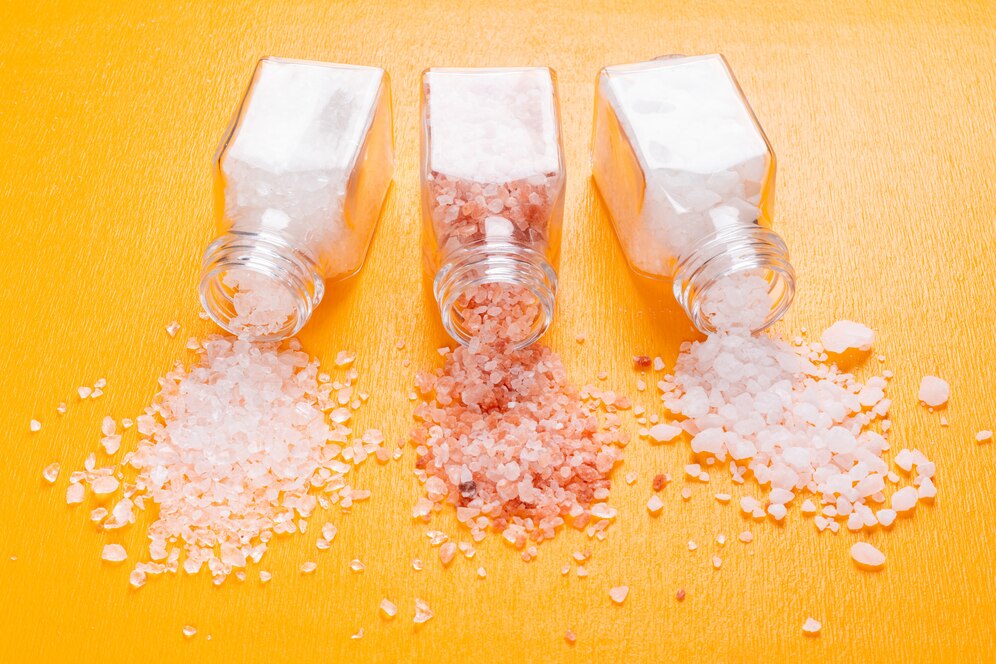
- .Introduction to Salt and its Impact on Health
- Understanding the Need to Reduce Salt Intake
- Salt and its Role in Health
- Effects of Excessive Salt Consumption
- 5 Ways to Reduce Salt Intake
- Cooking at Home with Fresh Ingredients
- Reading Food Labels Carefully
- Choosing Low-Sodium Alternatives
- Using Herbs and Spices for Flavoring
- Being Mindful of Salt When Eating Out
- Benefits of Reducing Salt Intake
- Improved Heart Health
- Lowered Blood Pressure
- Reduced Risk of Stroke
- Challenges and Tips for Overcoming Them
- Overcoming Taste Preferences
- Dealing with Social Situations
- Managing Cravings
- Conclusion
- FAQs on Reducing Salt Intake
- How much salt should I consume daily?
- Are there any health risks associated with salt substitutes?
- Can reducing salt intake help with weight loss?
- How quickly can I expect to see health benefits from reducing salt?
- Are there any specific salt-reduction diets I should follow?
Salt, a staple in many cuisines around the world, is not just a flavor enhancer but also a key ingredient that our bodies need in moderation. However, excessive salt intake has been linked to various health issues, including high blood pressure, heart disease, and stroke. If you’re looking to improve your health by reducing your salt intake, here are five effective ways to elevate salt from your diet.

1. Cooking at Home with Fresh Ingredients
One of the best ways to control the amount of salt in your diet is by preparing your meals at home using fresh ingredients. When you cook from scratch, you have complete control over the amount of salt added to your dishes. Opt for fresh fruits, vegetables, lean proteins, and whole grains, and experiment with herbs, spices, and citrus juices to add flavor without relying on salt.
2. Reading Food Labels Carefully
Many processed and packaged foods contain high levels of sodium, even those that don’t taste particularly salty. To avoid consuming excessive salt, make it a habit to read food labels carefully when grocery shopping. Pay attention to the sodium content per serving, and choose products that are labeled as low-sodium or sodium-free whenever possible.
3. Choosing Low-Sodium Alternatives
Instead of reaching for the salt shaker, explore alternative ways to add flavor to your meals. Opt for low-sodium condiments such as soy sauce, mustard, and vinegar, and choose unsalted nuts and seeds for snacking. When buying canned goods, look for options labeled as low-sodium or no-salt-added, and rinse canned vegetables and beans before using them to reduce their sodium content.
4. Using Herbs and Spices for Flavoring
Herbs and spices are excellent alternatives to salt when it comes to seasoning your food. Experiment with a variety of herbs such as basil, cilantro, rosemary, and thyme, as well as spices like cumin, paprika, turmeric, and cinnamon. Not only do herbs and spices add flavor and aroma to your dishes, but they also offer numerous health benefits, including anti-inflammatory and antioxidant properties.
5. Being Mindful of Salt When Eating Out
When dining out or ordering takeout, it can be challenging to control the amount of salt in your meals. However, there are steps you can take to make healthier choices. Opt for dishes that are steamed, grilled, or baked rather than fried, and ask for sauces and dressings on the side so you can control how much you use. Additionally, consider sharing a large entree or ordering smaller portions to avoid overeating.
Reducing your salt intake offers a wide range of health benefits, including improved heart health, lowered blood pressure, and reduced risk of stroke. By following these five simple strategies, you can elevate salt from your diet and take a positive step towards better health and well-being.
Conclusion
Elevating salt from your diet doesn’t mean sacrificing flavor or enjoyment in your meals. By cooking at home with fresh ingredients, reading food labels carefully, choosing low-sodium alternatives, using herbs and spices for flavoring, and being mindful of salt when eating out, you can reduce your salt intake without compromising on taste. Start incorporating these strategies into your daily routine today and reap the rewards of a healthier lifestyle.
FAQs on Reducing Salt Intake
How much salt should I consume daily? The American Heart Association recommends consuming no more than 2,300 milligrams of sodium per day, which is equivalent to about one teaspoon of salt.
Are there any health risks associated with salt substitutes? Some salt substitutes contain potassium chloride, which can be harmful to individuals with certain medical conditions, such as kidney disease or heart failure. It’s essential to consult with a healthcare professional before using salt substitutes.
Can reducing salt intake help with weight loss? Reducing salt intake can help with weight loss by reducing water retention and bloating. However, the primary benefit of reducing salt intake lies in improving heart health and lowering blood pressure.
How quickly can I expect to see health benefits from reducing salt? You may start to notice health benefits from reducing salt intake within a few weeks to a few months, depending on your individual health status and dietary habits.
Are there any specific salt-reduction diets I should follow? There are various salt-reduction diets available, such as the DASH (Dietary Approaches to Stop Hypertension) diet, which emphasizes fruits, vegetables, whole grains, and lean proteins while limiting sodium intake. It’s essential to find a dietary approach that works for you and fits your lifestyle

[…] The role of spices in liver health […]